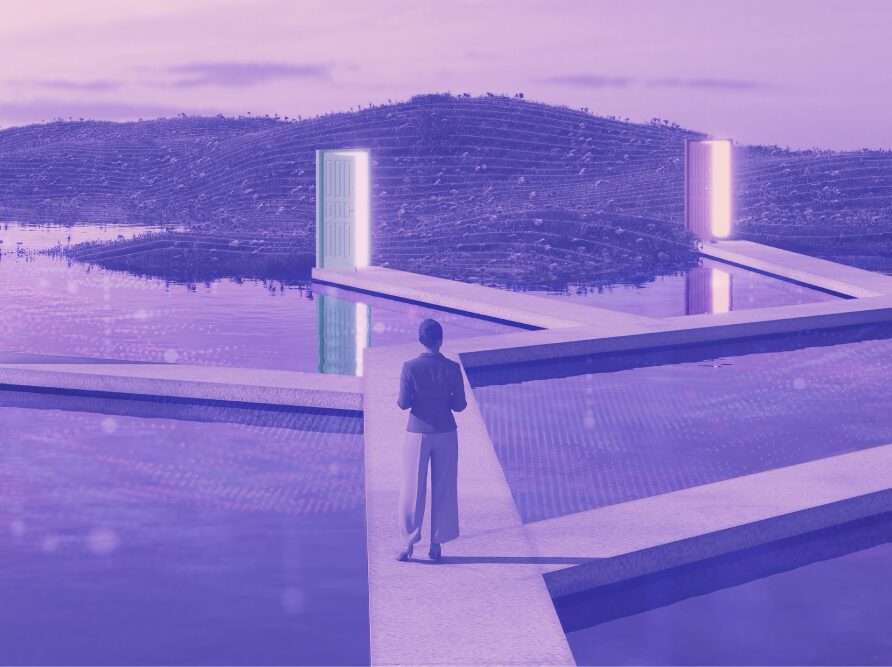Article
Human-Centered Design: The craft of scoping
* This content was originally published prior to N. Harris Computer Corporation’s 2022 acquisition of the Allscripts Hospital and Large Physician Practice business segment. Our business is now known as Altera Digital Health.
Editor’s note: This is the second blog in a series on Human-Centered Design (HCD)
Scoping is an art. How do you tell a story of what you will do? How do you give enough information to gain stakeholder/buyer buy-in so they can make the decision to support the work? How do you help the buyer feel good about you, trust your skill set, and “just know” you will get the work completed? The goal is to build a trusting relationship between you, your team and the client.
Setting Scope at the beginning of any project enables a team to make a plan that will foster a calm, thoughtful and stable project going forward—all while completing the work in a timely and efficient manner.
From my work as a consultant, here are my top five steps to scoping a project. This works for internal and external projects.
Note: There are designers who may not believe that HCD is “a process.” Some designers believe HCD is a series of methodologies or experiences. Like nuggets of work that get placed together in different ways. I believe this may be true in some instances. I also believe there are a few sequential steps to the process that will make for good relationships and brilliant outcomes in the end. Scope is the first step.
Scope. What is it?
Scope is the first step in the project planning process. It ensures that all stakeholders understand the problem, and how the team will solve for that problem. Scope takes final form in a written brief that includes a bit of project background, a mission statement, a defined process, methodology, schedule, team, budget and outcomes.
- The initial “co-create” conversation.
This is the conversation between the “asker and the doer.” Many times, as designers, we would get what I call a “back-of-the-napkin” ask. The designer comes in on a Thursday morning, and sees that a napkin (literally) sketch of a new interface is sitting on her desk. The napkin states, “Due Monday?” Setting scope helps us avoid unnecessary “back-of-the-napkin” requests. This ensures the team will deliver quality in a lower stress environment.
In this first conversation, the “asker” and “doer” map the territory together to understand a general project direction, get to know one another and generally start building a working relationship.
Pulling out a large pad of paper, the asker and doer can “map the territory” by drawing out the stakeholders, what they know of the domain, environment, culture, interactions and relationships. This gives the doer a list of assumptions they can prove or disprove through research. It helps the asker understand what’s involved, and helps both parties home in on a piece of the complex system they are attempting to build within.
- Understanding the domain.
The initial conversation provides enough information to further the investigation. The doer can understand the users and the competitors, while reading voraciously to understand what others have written about the subject. (I go into this portion of the work with a child’s eyes, interested and full of bright curiosity about what could be. This helps broaden my understanding of humanity and enable me to explore new spaces.)
- Creating a project mission statement.
A mission statement is one short statement that gives the team a “north star” to follow, and a way to talk about the project. Once created, just by saying the phrase out loud, the team can bring the outcome one step further into being. When the project team swings one direction or another, they can always look to the north star to guide them. Please know, a mission statement can often require some massaging and word-smithing in the end.
Quick start for mission statement creation. Brainstorm with your team: Three verbs, to do what, for whom (Hint: “whom” is the user).
Mission statements highlight what is in scope, and also define what is out of scope. So when a client comes to the team and says, “I need these three things” (in the middle of the project), the team can think back to the mission statement, and if those three things aren’t included, it’s time to renegotiate time, resources or budget.
- Create a process and schedule together.
Once the mission is created, the territory mapped, and the team understands the domain, the asker and doer defines a process and schedule. This is a time to share working styles, communication styles, weekly team meeting times, deliverable times, and methodology, and set it all to a time frame. This will help reduce miscommunication and missed expectations. Once the project starts, it will move fast, and there’s a lot of opportunity to miss each other. Creating process and schedule together will help keep a “no surprises” tone for the project, and offers a beautiful moment to learn together, collaborate and, ultimately, build trust.
Rule of thumb for setting schedules: think about how long it takes you, and then add 10%. (20% if it’s a new team.)
- Desired Outcomes.
List out exactly what you will provide. This might be “hard deliverables”, e.g., a research report, a prototype, or a workshop. Or it may include “soft deliverables”, e.g., collaborating internally or practicing cross-functional team-building skills.
In the end, the doer has created a hard deliverable to share for final sign-off. A one pager or project brief that includes background, a mission statement, a map of the territory, a well-defined process and schedule, and a list of deliverables that will drive great value.
The doer has also set the groundwork for clear communication across the team, a trusting relationship with the asker and a pattern of cross-functional collaboration that will guide them.
Scoping is a key step in ensuring projects have all that’s needed to inspire meaningful collaboration across the entire team and the stakeholders. When this piece of the process is methodically mapped out, and expectations are clearly aligned, the project’s foundation is established and the next steps can be carried out with purpose and delight.
With gratitude.
Here is the first blog in the series, “Human-Centered Design: Where compassion meets technology.”













